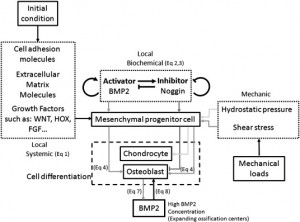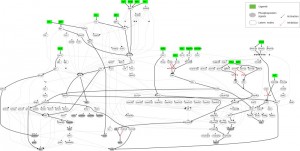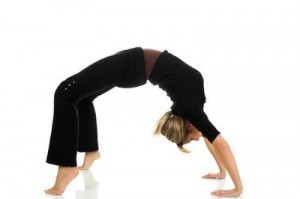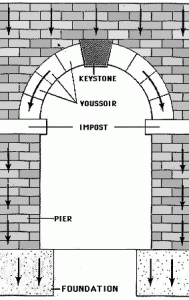I had once tried to explain what I know about the principles of biology and genetics to a reader of the website so that they would be able to understand what I am talking about when I get into the details of the research.
This will be a rather lengthy post on my own personal interpretation and explanation of the biological, genetic, and biomolecular principles that are being used in the website and which I will be using when I read studies and articles from PubMed.
If we remember from our high school biology classes, we were taught about the idea of genes, hereditary, alleles, and we might have done a few allele charting. As a reminder, we must start from basics.
Biology
From high school (and some college level) biology basic principles…
1. From a macroscopic to microscopic direction approach, we can say that the human body consist of about a dozen organ systems.
From the Wikipedia article on Biological Systems…
There is the circulatory, respiratory, lymphatic, digestive, reproductive, nervous, skeletal, endocrine, muscular, and a few others I don’t remember.
For our study on height increase, we are focused on the endocrine system and the skeletal system.
The specialized medical study of the endocrine system is called endocrinology and the doctors which focus on this sytem are known as endocrinologists (ex. Dr. Sanjay Gupta)
The specialized medical study of the skeletal system is called orthopaedics or orthopedics. From the wikipedia article on Orthopedic Surgery…
“Orthopedic surgery or orthopedics (also spelled orthopaedic surgery and orthopaedics in British English) is the branch of surgery concerned with conditions involving the musculoskeletal system. Orthopedic surgeons use both surgical and nonsurgical means to treat musculoskeletal trauma, sports injuries, degenerative diseases, infections, tumors, and congenital disorders.”
2. At a lower level, each organ system is made up of individual organs.
An example is the fact that the digestive system is not just the stomach, but also the small intestine, large intestine, pancreas, gall bladder, liver, rectum, and throat area.
For the endocrine system, we study the hypothalamus, the pituitary gland, especially the anterior region, the adrenal glands, the thyroid glands. The glands all are for production of certain hormones that will be used to regulate the function of the body to reach some form of equilibrium/homeostasis.
For the skeletal system, we study the lower limbs, vertebrate, and specific cartilage regions mainly. We focus our attention in the lower limb area on the femur, the tibia/fibula combination which make up the lower part of the human leg, the patella, the calcaneus, and the cartilage on the ends of these bones. For the vertebrate parts, we are looking at all the areas, the cervical, thoracic and lumber regions, focusing on the intervertebral disks on possibly how to manipulate the annulus fibrosus and the nucleus pulposus. These areas are notorious for being places where serious painful injuries can develop like bulging disks, herniated disks, pinched nerve, and lower back pain so if we plan to try any techniques or methods on the back area, we will be looking for something that doesn’t cause a major disturbance in the skeletal system of that region.
3. At a lower level, each organ is made of specific types of tissue.
From the Wikipedia article on tissue, “Tissue is a cellular organizational level intermediate between cells and a complete organism. A tissue is an ensemble of similar cells from the same origin that together carry out a specific function. Organs are then formed by the functional grouping together of multiple tissues.”
There is 4 types of tissues.
- Connective – Connective tissues are fibrous tissues. They are made up of cells separated by non-living material, which is called extracellular matrix. Connective tissue gives shape to organs and holds them in place. Both blood and bone are examples of connective tissue. As the name. It supports and binds other tissues. Unlike epithelial tissue, connective tissue typically has cells scattered throughout an extracellular matrix (Wiki)
- Nervous – N/A
- Muscle – N/A
- Epithelial – N/A
Since our study is looking at the skeletal system, we will not be going into any more detail on the nervous, epithelial or the muscle tissue. Now it is true that technically for us to do anything on the bone, we will have to possibly make a cut/incision through other tissue like the muscle or the epithelial but for now, our focus is on the connective tissues.
The connective tissue we will be focusing on are the cartilage and the bone, and how to remodel them into the form we are looking for. Ultimately, our goal is to figure out how to lengthen long bones (and maybe irregular bones) but to do that, we may also indirectly be affecting the other types of bones around it. To avoid any harm or injury to a subject, we want to also learn about the tissues that wrap themselves around on on the bones.
Cartilage is mainly made of a intercellular matrix filled with collagen and proteoglycans. As for bones, we want to focus on the non-living organic and non-organic materials that gives bones their hardness quality. The main component that forms this non-living matrix of the bones is called hydroxyapatite. It is calcium derived, and if we remember the calcium buildup we find in our bathrooms or certain areas in our body which are so hard to remove being stuck, we would remember that the hardness comes from calcium phosphates, which when in the human body seems to interact with water molecules to add the hydroxide group (-OH) and it gets attached turning it into the hydroxyapatite.
Something to note is that from my personal study on the tissue of cartilage, we can say that in the natural growing process of endochondral ossification, cartilage tissue turn into bone tissue by going through the process of “calcification”.
As for bones…
It is nearly concluded at this point that we should not be focusing on bone growth or bone regeneration but actually cartilage regeneration. Bone growth and regeneration is relatively easy. The bones after fracture automatically and relatively quickly heal themselves. You can increase that healing process by using LIPUS, PEMF, capacitative electrical field application, dynamic mechanical loading, or adding certain osteogenic growth factors. Bones regenerate very quickly and easily.
So what I am implying is that when we are analyzing tissues, at that level, we will be focusing almost all of our effort into looking at cartilage creation and regeneration either inside the bones or through in vitro methods and then do an implantation. Bone tissues we will look at sometimes but the focus will not be on that tissue.
4. At a lower level each tissue is made of a certain type of cell.
For our research we will be only looking at two types of cells, cartilage cells, chondrocytes and chondroblasts, and bone cells, osteocytes, osteoblasts, and osteoclasts.
Chondrocytes will be intensively researched here, especially looking for ideas and techniques on how to get the progenitor cells to differentiate into chondrocytes, how to keep the chondrocytes in that state without going into apoptosis or differentiating further into osteocytes and osteoblasts. Chondrocyte Proliferation, Chondrocyte Hypertrophy, and stacking into the correct direction for chondrocyte columns is the key and we will keep looking to find ways to manipulate the genome, nucleotides, or even the microRNA to try to get the chondrocytes to stay in the small region of function we are looking for to increase longitudinal growth.
As for bone cells, osteoblasts is the bone cells which create bone material. Osteoclasts is what break down bone material. We want to focus more on osteoclasts and try to get the osteoclasts to function at a higher rate in a certain region of the skeletal system, like in a band on the long limbs so that bone resorption is increased. If bone resorption is increased, we might be able to get the long bones to become weaker for tensile loading or get the hard bone material to be replaced at a reasonably slow rate to be replaced by chondrocytes, and then cartilage tissue.
5. At a lower level each cells is controlled by certain proteins, kinases, signals, enzymes.
Proteins provide the basic structures for every organ system in the body. The human body is made of many things, including sugars and lipids in the form of adipose tissue. There is also the nucleic acids, and minerals like calcium, phosphorous, and iron which form hard deposits in the extracellular matric of bones, but overall, proteins are what really matter since the very goal of the genes in our genome is to make proteins. Proteins have so many functions that it would be really hard for me to list all of its functions.
For our purposes, I’ll say that proteins are what will eventually make up the components that are a part of all the signal pathways we find in the intracellular matrix (within the cytoplasm). This includes previous posts about the Wnt/Beta-Catenin Signal Pathway, the MAPK/ERK pathway, and the PI3K/AKT/mTOR pathway. Proteins will act as the signals which send signals from the outside of a cell into a cell, and proteins will be what is send out of the nucleus to the outside of the cell to direct the process of the body.
Our research is specifically focused on seeing which proteins have either a direct or indirect effect on chondrocyte proliferation, hypertrophy, and differentiation in the natural growing process of endochondral ossification in postnatal humans. At some point we are hoping to map out the signal map of the myriad of proteins which effect the growth plate. Once that is done, we hope that we can pinpoint the 4-5 most influential proteins which either goes into the cell nucleus or leave the cell nucleus which effects the growth process. We can then use external proteins to be injected to either inihibit the proteins which are slowing down the growth process or to up-regulate the proteins which make the growth process still possible.
6. At a lower level each protein is produced by genetic mechanisms like transcription, reverse transcription, translation, as well as post-translational processes.
In the nucleus of a cell (sometimes the mitochondria will also have its own DNA/RNA stuff) there will be DNA that need to be duplicated or manipulated on. Go to the Genetics section for more details on what each process or element in genetics will mean.
What I am going to say here is our most important research probably will eventually come down to the genetics, specifically to the microRNA and how each of the microRNA effects each specific gene of the body Sciences have concluded that the human genome has only around 25,000-30,000 genes, much less than expected. However there is so much phenotypical variation in the human species. No two people in our 7 billion population looks alike, and yet it was found that humans in general are 99.99% alike in our genes and differences. Even a dark skinned male from tanzania is still 99.95% similar in the types of genes they have to a light skinned female from norway so it is clear that the master regulators of the human trait of height is probably the mRNAs and that the phenotypical differences we see can not be just from gene differences.
Genetics
From high school (and some college level) genetics basic principles…
The individual human is composed of around 100,000,000,000,000 (that’s 100 trillion!!) cells more or less. In almost all of the many different types of cells in the human, except for say red blood cells, there is a nucleus in the cell. The types of cells that have nucleus include fat cells (adipose), nerve cells (neurons), bones cells (osteoblasts and osteocytes), and many other types. In each of these cells in the nucleus, there is a copy of the entire human genome inside. The human genome has (barring people with strange genetic deformities) 46 individual chromosomes. Some resources would reinterpret the 46 number to say that there is 23 pairs of chromosome pairs. The main exception for the 46 pairs is the human sex cells, the sperm and eggs (aka gametes), which have a 23 individual chromosomes. When there is 46 individual chromosomes total in a cell, that is known as a diploid. When there is 23 chromosome in a gamete, that is known as a haploid.
In one human gemete with the 23 chromosomes, there is about 3 billion DNA base pairs. Base pairs is where two of the 5 main types of nucleotides attach to each other. There is the A,T,G, and C for the nucleic acid known as DNA (deoxyribonucleic acid). For the other main type of nucleic acid, known as RNA (ribonucleic acid), there is the A,U,G, and C.
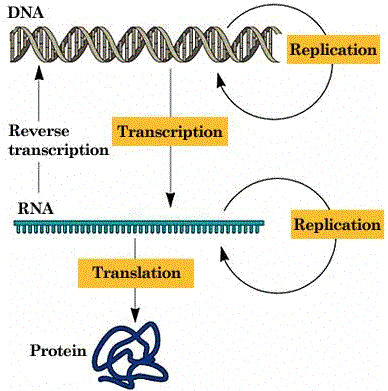 DNA seems to have two main function that that is for it to replicate or to make RNA for some reason.
DNA seems to have two main function that that is for it to replicate or to make RNA for some reason.
There is 4 main types of process that is talked about in genetics a lot
- Replication – replication seems to be exactly what it sounds like. both the DNA and RNA have processes that allow them to replicate (reproduce) an exact copy of themselves
- Transcription – the process where the DNA is cleaved/cut in the middle breaking the bonds the A (adenine )made with the T (thymine) and the G (guanine) made with the C (cytosine) as a nucleotide base pair. This results in only one half of the double helix strand forming a RNA.
- Reverse Transcription – the process where the single strand RNA becomes a double helix strand DNA again.
- Translation – the process where the RNA becomes a protein. For a more detailed description of the process, check out the Wikipedia article on Translation.
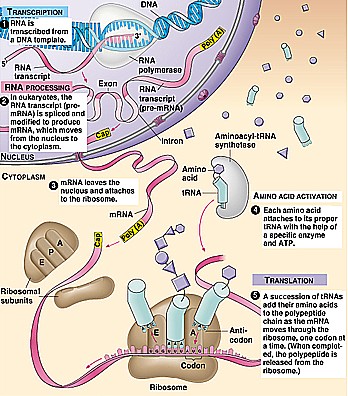 There is 4 main types of RNA (Ribonucleic Acid) that are really important.
There is 4 main types of RNA (Ribonucleic Acid) that are really important.
- tRNA – transfer RNA –
- mRNA- messenger RNA –
- rRNa – ribosomal RNA –
the 4th type of RNA which our research may have to go into is which is known as microRNA
- microRNA –
At this point, the research will be on the microRNA and how it affects the genes that are being produced by the other RNAs.
Conclusion:
As any biology or genetics university major can see, my own personal knowledge on human biology and physiology is very limited at this point. My genetics is very weak and I need to read and study far more to get further into the research. There are at least 100 more published papers I would have to go through before I can come up with anything of real value.

